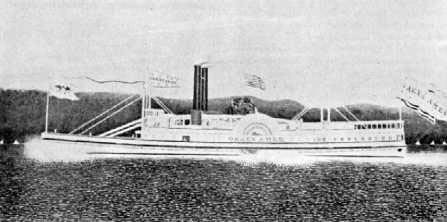The steamboat Oakes Ames was built in 1868 for the Rutland Railroad by the Napoleon B Proctor Shipyard in Burlington, Vermont. The 244-foot paddle wheeler was built to transport railroad cars from Burlington to Plattsburgh, New York, across Lake Champlain. She was named after Oakes Ames, one of the railroad’s directors.
The Champlain II was renamed and repurposed for passenger service in 1874. The ship was wrecked the following year, on July 16, 1875, when it ran aground after drifting off course while being guided by a pilot under the influence of morphine. Shortly afterwards, a salvage operation removed much of the superstructure, leaving about a third of the wreck in place.

Lake Champlain is a naturally occurring freshwater lake in North America. It is mostly located between the states of New York and Vermont in the United States, but it also extends north into the Canadian province of Quebec.
Because of the Richelieu River’s connection to the St. Lawrence Seaway and the existence of the Champlain Canal, Lake Champlain is sometimes referred to as “The Sixth Great Lake.”
Champlain II was only covered for fire. The Champlain Transportation Company attempted to recoup some of its losses by salvaging the engines and superstructure, but the submerged stern section was left in place.
Some Dive Info
Depth 15 feet to 35 feet :: good for beginner divers
The bottom is sand-like. To avoid having limited visibility, stay off the bottom.
Due to the presence of zebra mussels, (as visible in the video, above) gloves are required, as is the carrying of a knife for discarded fishing line.
The wreck is located near the New York shore between Barn Rock and Rock Harbour, north of Westport, New York, and across the river from Basin Harbour, Vermont.
Private Shoreline.
The site is now an archaeological site in Essex County, New York, near Lake Champlain. In 1997, it was added to the National Register of Historic Places.





